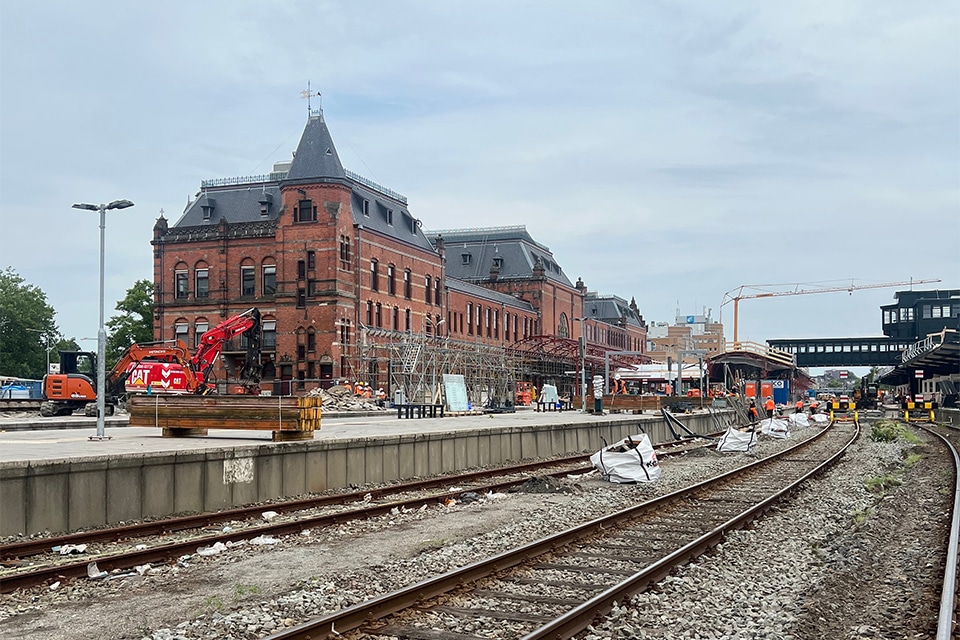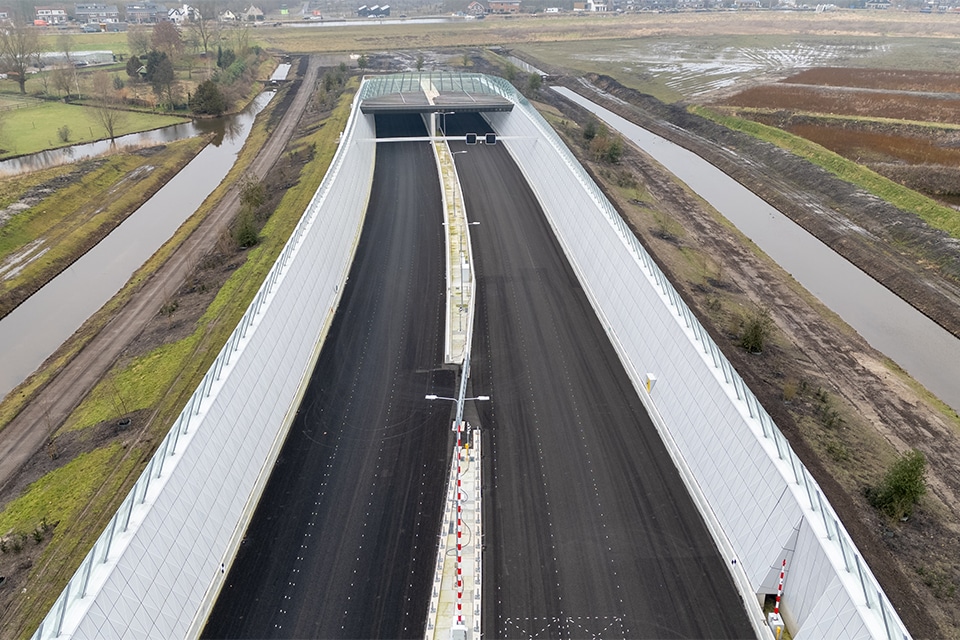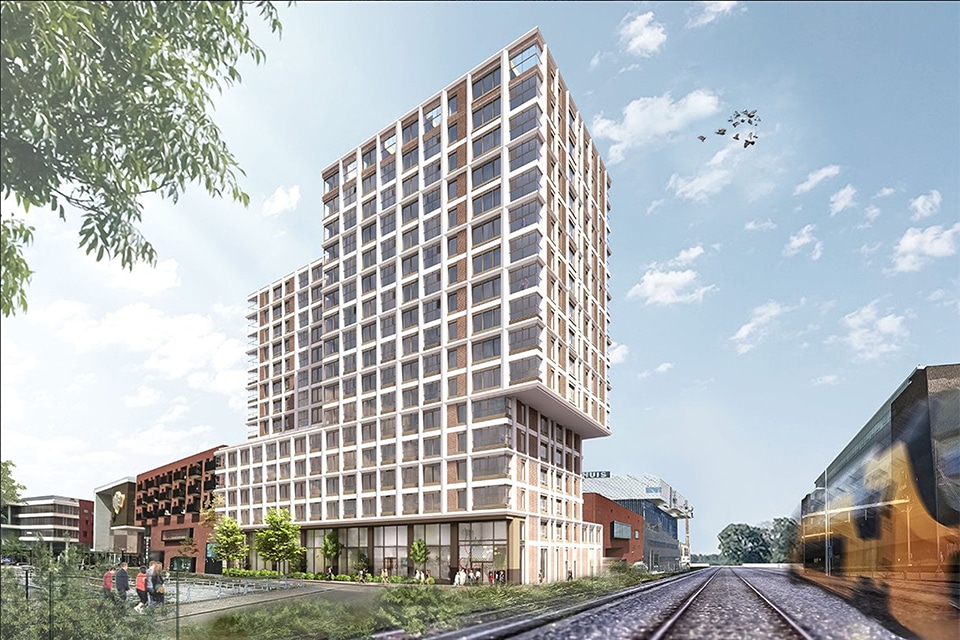
'Construction site in the water is specialist work'
Commissioned by construction combination VORM and BESIX, this work was carried out by the HeSto v.o.f. execution team. While foundation specialist Gebr. van 't Hek B.V. installed the sheet piling and foundation piles for the new building, contracting and transport company Roel van der Stoel B.V. was responsible for the earthwork and drainage. Site management was provided during construction, after which, shortly before completion, the construction road around the new building and the temporary foundation piles for the so-called 'cantilever' were removed again.
"We are proud that after the Pontsteiger we had the opportunity to do another beautiful 'wet' job, laying the foundation for the construction of the iconic Sluishuis," says Erik van der Stoel, director-owner of Roel van der Stoel B.V. "We have been actively working with Gebr. van 't Hek B.V. for more than 25 years, 6 of which in the joint venture HeSto. By jointly taking on challenging projects such as Sluishuis, we can completely relieve clients." Patrick IJnsen, director of Van 't Hek Group, agrees: "Thanks to HeSto, clients deal with a single point of contact for building site, cofferdam and foundation. All activities are perfectly coordinated and solutions are sought proactively in the event of problems. This ensures certainty and confidence among our clients."

Specialist work
"Everything you can build above ground level is visible and planable," emphasizes René Brouwer, business manager at Roel van der Stoel B.V.. "The part below ground, however, regularly causes surprises and requires a specific approach." IJnsen: "Creating a construction pit and foundation is specialist work. Especially in the case of Sluishuis, where, for example, HEK tubular piles up to 62.5 meters in length were used. The combination with building in the water makes this project unique. From the design phase to land reclamation, the parties within the HeSto execution team ran a relay race. Time and again, one took over from the other, to dredge, fund, install sheet piling, backfill and stamping."
770 concrete piles, 96 tubular piles
At the end of 2018, construction could begin. "We then started with a blank sheet; the stretch of water in which Sluishuis was to rise," explains Sven Westerneng, project manager at Gebr. Van 't Hek. "To create sufficient water depth, Roel van der Stoel B.V. first dredged large quantities of sand and silt here. Then we were able to drill the tubular piles from the water and drive precast concrete piles." For the foundation, Gebr. Van 't Hek drove 770 precast concrete piles with a pile diameter of square 400 mm, at about 21 meters below water level. Also, 96 HEK tubular piles (Ø864) with a tip of 950 mm and a length of 62.5 meters were drilled. "In addition, we placed the inner and outer dam walls, after which Roel van der Stoel B.V. dredged the inner construction pit." IJnsen: "Gebr. Van 't Hek installed an outrigger frame from the water, after which a large amount of sand was dumped between the inner and outer dam walls (approx. 30,000 m³). This created sufficient working area around the construction."

55,000 m³ of soil excavated
"You can roughly divide the dredging process into two," says Brouwer. "First, we removed a layer of silt about 10,000 m³ to get to depth. We also removed about 4,000 m³ of drilling mud while drilling the HEK tubular piles to ensure sufficient water depth for Gebr. Van 't Hek's pontoons. Under the water bottom we excavated approx. 45,000 m³ of soil. This work took place between Gebr. Van 't Hek's foundation piles; quite a challenge. To prevent damaging foundation piles, we used GPS systems on the cranes. To ensure stability and prevent the bottom from eroding, we applied a layer of sand of about 1.50 meters to the water bottom (total: about 10,000 m³). The cofferdam was then drained and realized. The building pit has a size of approx. 10,000 m², of which approx. 5,600 m² is intended for construction. The rest is laid out as a construction road."
Dry feet
"During construction, we are site managers," says Van der Stoel. "We have installed various drainage and pumping systems, ensuring that the performers keep their feet dry. After all, this remains a construction project in the water." Says Brewer, "Shortly before completion, the construction road around the new building will be excavated back to water-bottom level. Of the 40,000 m³ of sand we have applied, about 30,000 m³ will soon be removed and disposed of again. The temporary foundation piles under the cantilever will also be removed then."
Construction Info
Construction site execution and foundation piles
HeSto v.o.f.
Engineering firm
Hektec
Sheet piles and foundation piles
Gebr. van 't Hek B.V.
Earthwork and drainage
Roel van der Stoel B.V.
Partner drainage
Mos Grondwatertechniek B.V.
Partner dredging
De Vries & van de Wiel B.V. (DEME Group)



